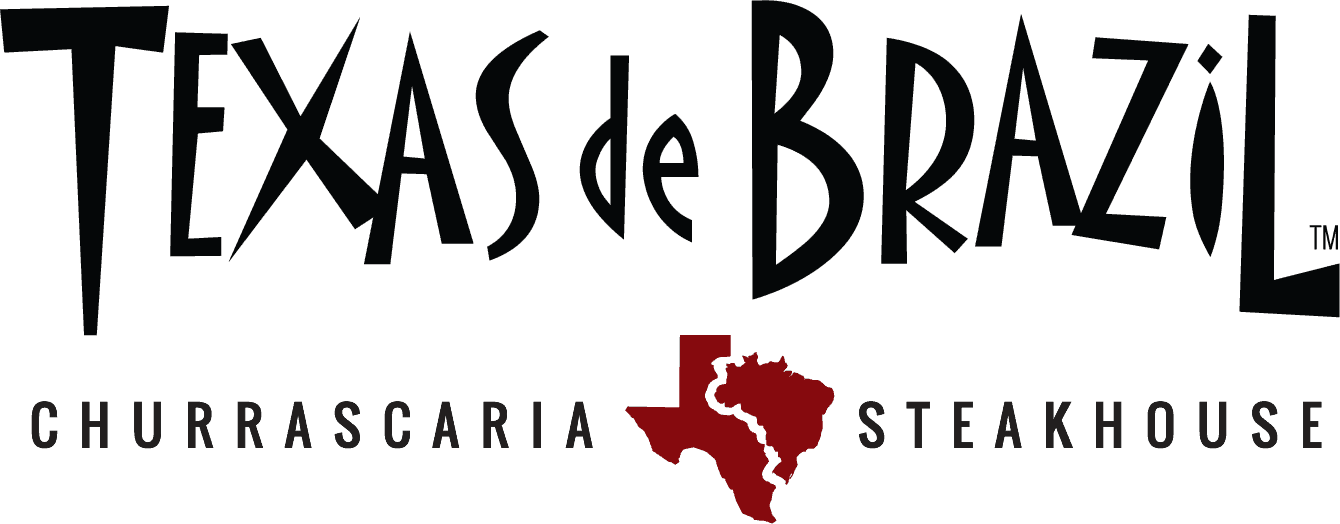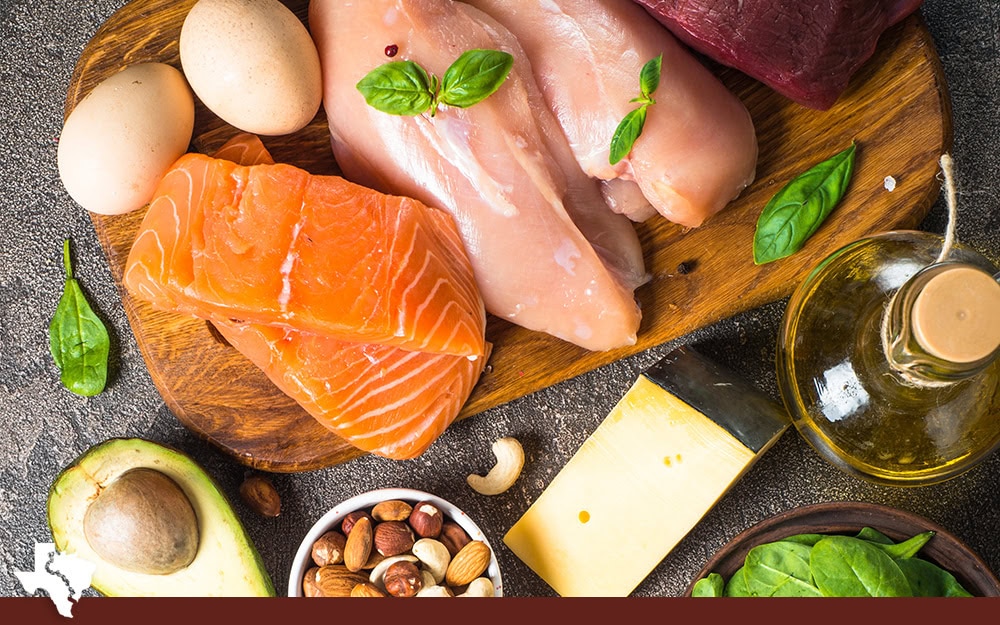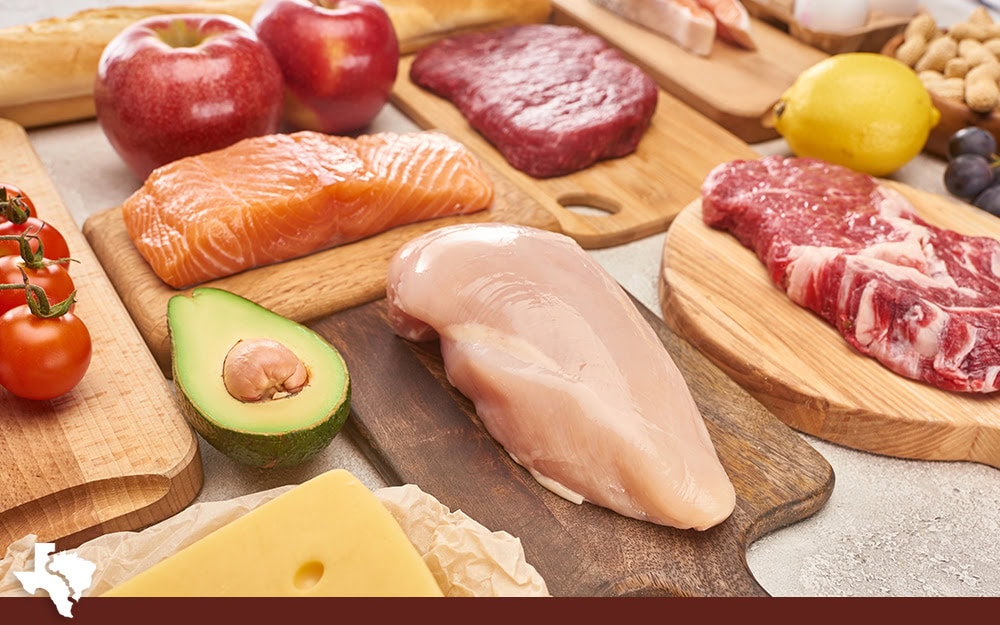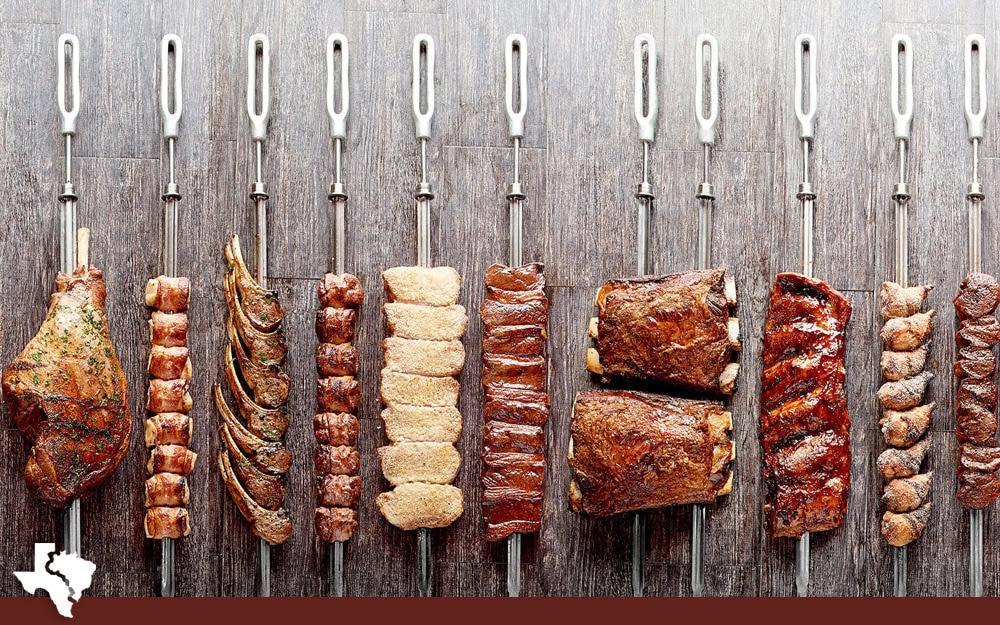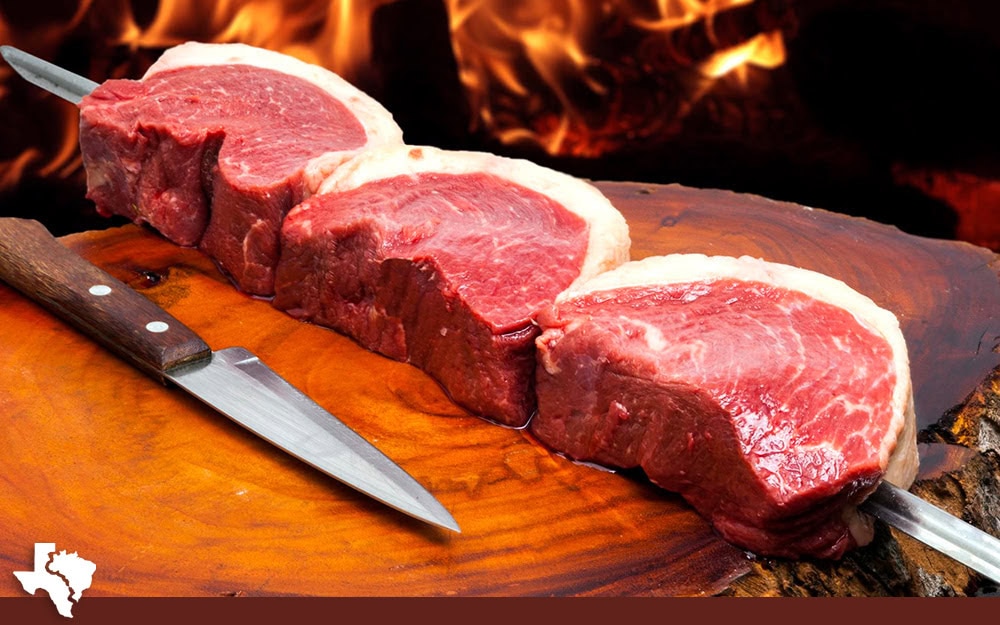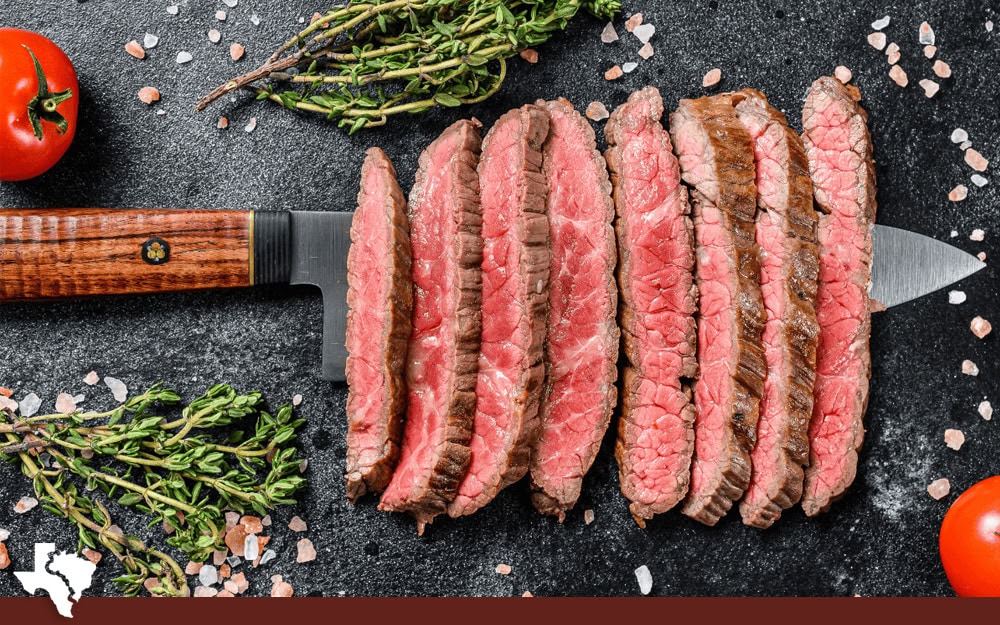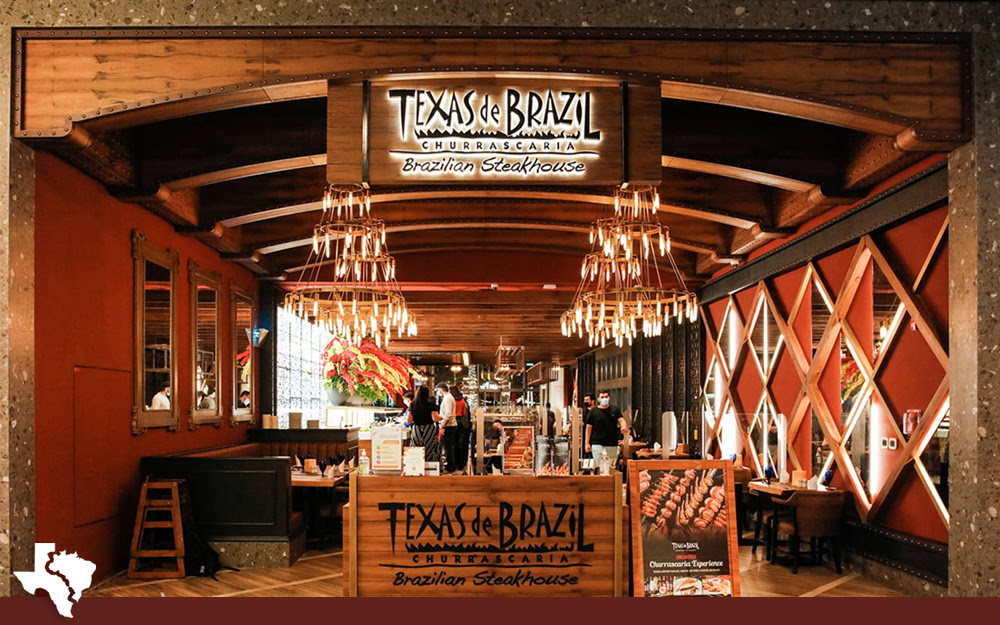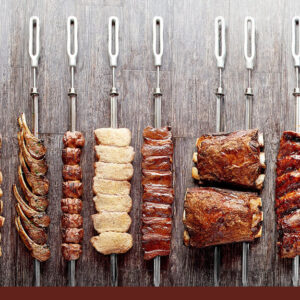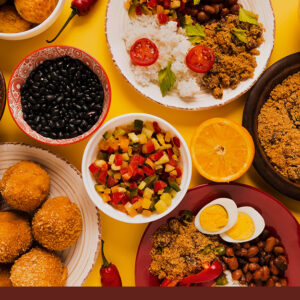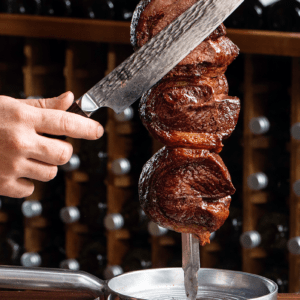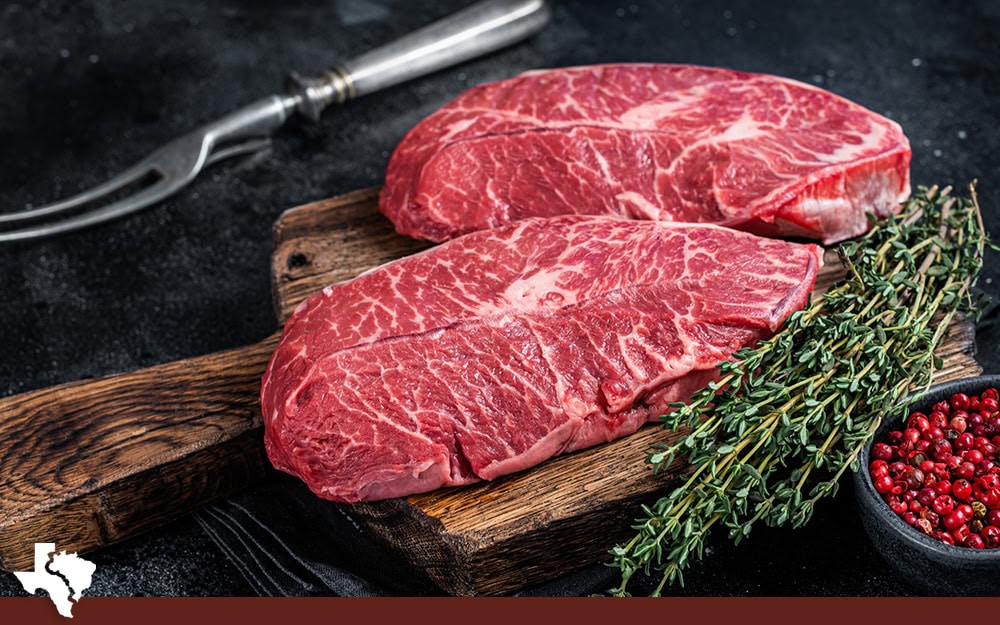
For decades, people have been concerned with the fat content of their food. There’s a reason for this – and to a certain extent, it’s a good one – and while the actual repercussions of that number might not be as strong as you think, it’s still information worth having, so it’s information we provide.
Let’s talk about dietary fat, what it means to have fat in your diet, and which meats on offer in our churrascaria have the most and least fat.
Table of Contents
A Rundown on Dietary Fat
Before getting into specific numbers, let’s talk a little about dietary fat in general.
First of all, there has been a very long campaign against fat in the food we eat. Nutritionists who didn’t really know better believed that when you eat fat, your body stores it as fat. Therefore, the more fat you eat, the fatter you become, and by cutting out fat, you could lose fat in your body.
The truth is a lot more complex than that. Your body stores additional nutrients as fat no matter where they came from, and in fact, a significant portion of the fat reserves in our bodies comes from carbohydrates. Carbs are easier energy for the body to access, break down, and store (as body fat) than protein or fat itself.
This is not to say that fat is universally good for you just because it’s not universally bad for you. The truth, as always, is somewhere in the middle.
Fat is necessary for the proper functioning of the body. You need fat for energy, for hormone production and regulation, for brain function, and for the absorption of fat-soluble vitamins. Fat is also a key component in flavor, which is why some of the meats known to be the most delicious options are well-marbled with fat, and why some of the most prized beef comes from specialized breeds of cattle like Kobe cattle, which genetically have much more fat than other cattle.
There are, in reality, four different kinds of fats. They all act differently in your body, and some of them are actually very beneficial.
The first is monounsaturated fats. These are the healthiest kinds of fats and are why things like olive oil are broadly recommended as ingredients. Studies have shown that monounsaturated fats can help regulate blood sugar, lower cholesterol, help with weight loss and blood pressure regulation, and more. They also help you feel full when you eat, so you eat less and keep your caloric intake within a sensible range.
The second kind of fat is polyunsaturated fat. These include omega-3s and other kinds of longer-chain fatty acids, and have a variety of benefits in moderation. Omega-3s benefit inflammation, help reduce the risk of heart disease, reduce diabetes risk, and can even reduce depression. Omega-6 fats can also be healthy in moderation, but if you get too many of them, it can backfire. Unfortunately, omega-6 fats are prevalent in modern diets, so it’s easy to get too much of them.
The third kind of fat is saturated fat. Saturated fats are known for raising cholesterol, both good and bad cholesterols, and the specific ratio depends on the specific foods being consumed. It’s a very common kind of fat, and ends up roughly neutral because of this; some instances are bad, others are good, and you have to pay rather close attention to know which is which.
The fourth and final kind of fat is the worst kind of all, trans fats. Trans fats are rare in nature but are primarily the kind of fat produced for hydrogenated oils. They’re also by far the worst for your health, and can cause inflammation, bad cholesterol, heart problems, insulin resistance, and more. For obvious reasons, there has been a significant push to reduce trans fats in the foods we eat, but it’s a long battle to fight.
How Much Fat is Too Much?
Fat is one of three macronutrients, so it will make up a decent amount of the calories you consume in a day. This isn’t necessarily bad; again, it’s a big part of what makes you feel full and satiated after eating, so it can help reduce the overall amount of calories you eat and make it easier to stay under certain caloric thresholds.
The amount of fat you consume should be around 30% or less of your caloric intake, at least according to modern generic dietary advice. In general, women should aim for around 2,000 calories per day, and men aim for 2,500, though there’s a range plus or minus about 400 in either direction for both.
At 2,000 calories in a day, you would want to aim for about 67 grams of dietary fat. At 2,500 calories, it’s about 83 grams of fat, and at 1,500 calories, it’s closer to 50 grams.
That gives you a baseline to use to compare to the amounts of fat in various foods, so you can estimate whether or not you’re getting too much fat, not enough fat, or just the right amount of fat in your diet.
There’s also a handful of lifestyle and diet options that can change these numbers. If you’re on a ketogenic diet, you’ll get more fat; if you’re in a low-fat diet, the numbers will be lower. Since we’re really just giving you a basis of comparison, we’re not going to dig deep into these alternative diets right now. Maybe another time!
Now that you have a baseline for comparison, let’s talk about the various meats we offer at Texas de Brazil, as well as a couple of other menu items, and some other considerations you might have.
Brazilian Meats: How Much Fat Do They Contain?
Different cuts of meat will have different amounts of fat in them. Some meats come from lean, working parts of an animal, while others come from less functional muscle groups that can get more marbled over time. Note that we’re including all of the meats we offer, not just the cuts of beef.
We list fat totals and saturated fat amounts in this rundown. It’s worth mentioning that none of the meats we offer have trans fats, which are only found in a couple of menu items, like the crème brulee, cheesecake, and lobster bisque.
First up is alcatra. Alcatra is a roast made of top sirloin, which has the fattier adjacent cuts removed, so it doesn’t have much fat itself. It has about 2.5 grams of fat, where one gram of that fat comes from saturated fat. This comes from a 60 calorie serving.
Slightly fattier than alcatra is the leg of lamb we offer. Lamb is far from the fattiest meat on the menu, but it’s slightly fattier than the pork, and on par with alcatra. It also has about 2.5 grams of fat, one gram of which is saturated fat. This comes from a 60 calorie serving.
Next up is our parmesan crusted pork loin. The addition of parmesan cheese and the other ingredients in the breading increase the fat of this dish slightly, so you have about three grams of fat per serving, one gram of which is saturated fat. This comes from a 90 calorie serving.
After that, you find bacon-wrapped chicken breast. A 140 calorie serving of chicken wrapped in bacon will have about 4.5 grams of fat, and 1.5 grams of saturated fat. Bacon, obviously, is where most of this fat comes from. Chicken itself is extremely lean, so much so that it’s a key component of many healthy diets.
Picanha is next on the list, and it’s pretty interesting. Picanha is a very lean cut of meat with a fat cap made of almost pure fat attached to the end. As it cooks, the fat cap starts to melt and render down, and that fatty flavor soaks into the leaner meat. The end result is a lean meat with the robust flavor of fat, but without as much fat as you might expect, since you’re generally not eating the fat cap itself. 120 calories of picanha gives you 5 grams of fat, two of which are saturated.
Interestingly, our garlic picanha is slightly different; a garlic picanha has slightly more fat at 6 grams rather than 5, though honestly, this is all within a margin of error, which we’ll talk about more in a bit.
Sirloin is next up. 130 grams of sirloin brings 5 grams of fat with it. This is par for the course for beef and can be considered right in the middle of different kinds of beef cuts.
Our parmesan chicken drumettes are similar to the parmesan chicken breast, but since drumettes are a fattier cut of meat, 110 calories of chicken here comes with six grams of total fat.
Next up is filet mignon. Widely known as the most delicious cut of beef, this is due to a careful balance between lean meat and fat. Filet has seven grams of fat in a 130-calorie serving, 2.5 of which are saturated fat. The bacon-wrapped filet mignon is even fattier because of the addition of bacon, as you might expect.
Flank steak, next on the list, is 8 grams of fat in 130 calories. Flank steak is a larger cut and can have a lot more variability between servings, though, so these numbers can be variable.
At this point, the remaining cuts of meat are all fattier largely because of the kind of meat they are. The Brazilian sausage, for example, has 14 grams of fat, because added fat is a key part of making a good sausage. Similarly, both the beef and pork ribs are very fatty, because there’s a ton of fat stored in and around the ribs, so beef ribs have 24 grams of fat in a 270-calorie serving, and pork ribs are our fattiest option with 26 grams in a 320-calorie serving.
Remember, the average person should get around 50-80 grams of fat per day, to keep all of these in perspective.
If you want to see these numbers for yourself, and see other nutritional facts, you can view our full nutritional chart here.
Variable Numbers and Cuts
One thing we’ve mentioned above and need to talk more about is the fact that all of these numbers are just estimates. Different pieces of the same cut of meat from the same animal can have different specific amounts of fat, and the same cut from two different animals, raised even in the same way, can be different. All of the numbers we’ve listed are just estimates based on the average range a given cut is likely to have.
Fortunately, you don’t have to worry about added fats coming from things like butter or oil added in the cooking process. The Brazilian churrasco method of cooking is a simple, open-flame barbecue method that doesn’t really add much of anything to the meat.
The exceptions being, of course, the bacon-wrapped or parmesan-crusted versions. When you add a fatty cut of bacon to a lean meat, the fat content goes up. Who knew?
Should you be concerned with the fat in the meats you find here at Texas de Brazil? Truthfully, probably not. As we’ve mentioned above, fat is good for you, and none of our meats contain the trans fats you want to avoid. As long as you aren’t eating 10,000 calories in food here every night, you’re going to be fine.
Want to know more about the nutrition of the items on our menu? Have any other questions, about the etiquette, the dress code, or anything else about our churrascaria? Feel free to reach out! While you’re at it, you can also make a reservation; we’d love to have you stop in.
Don’t forget to swing by our eClub and sign up for special deals and exclusive offers! If you like our meat and menu, you’re sure to like it even more if you’re getting it on special.
